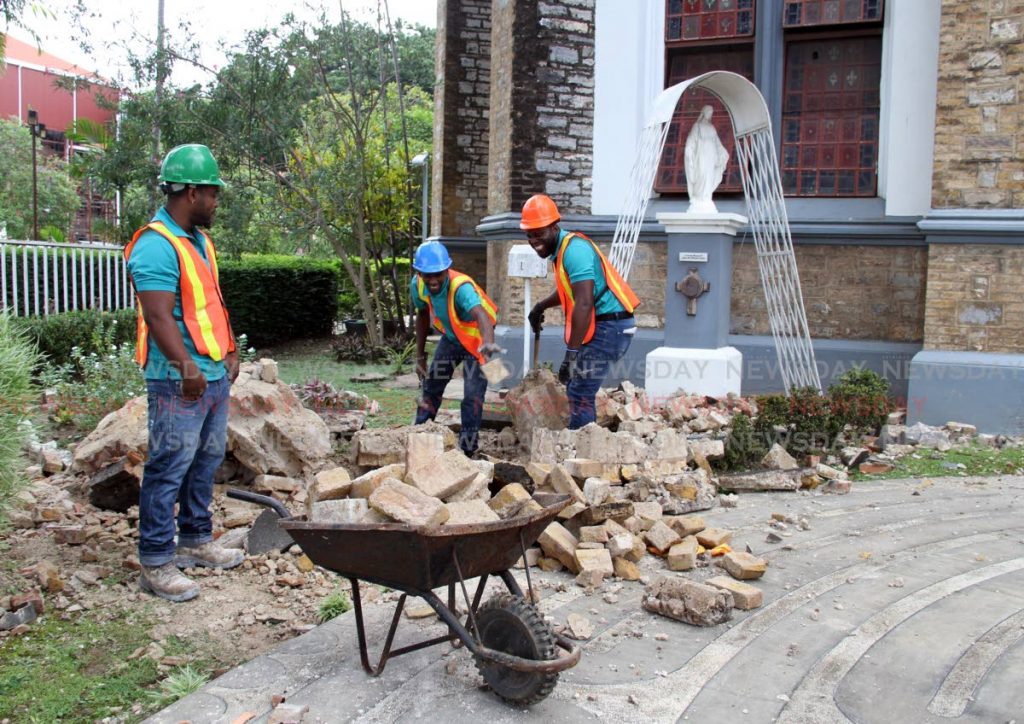Building code needed before the ‘Big One’

THERE must be a legislative building code, because there needs to be a standard to which people in the building industry are forced to comply.
Head of the Seismic Research Centre, UWI, Dr Joan Latchman said there was a need to accelerate this process in every sphere, nationally, regionally and internationally, given the extent of damage experienced during Tuesday’s massive 6.9 quake. Several relatively new buildings were damaged, including several government ministries.
Again, Latchman said TT was due for a major earthquake, but said this was not the one.
“Yes, we are long due for one, but we can’t say when, unfortunately.”
Latchman said the “doorway safety” rule had been abandoned, as buildings today with soft walls and doorways offered little protection. She said people needed to know their buildings to decide where offered the best protection.
“We have the soft walls and soft doorways that offer no protection. If you know your doorway and you have that beam over the doorway, that could still offer a measure of protection. A lot of people can’t figure it out, so we are not really suggesting, now, the doorway.
“You can seek protection under a sturdy heavy desk – not glass– in an end corner.”
If you are on a ground floor and the door is there “and a nice open field is there, by all means step out,” she said. “If you have to run down to try to exit the building, we don’t recommend that, because just as you saw on Tuesday bits and pieces falling off sides of buildings and walls, in your attempt to run, there are two things that can happen. If the shaking is hard enough, you can’t run properly and you can trip over your own feet, so it is dangerous just trying to run and debris can fall on you.”
She said people should go outside “if it is right there and you can just step out.”
Otherwise they should seek protection where they are.
Asked about the ground splitting, Latchman said this could happen, but was rare.
“The actual fault has to be passing in that area and the earthquake has to be shallow. This earthquake was down at 130 kilometres.
“You can have settlement, where you can see some offset in the surface of the ground because something has settled. You can also have landslides.”
She said people must pracise, and being mentally prepared was so important when there were these hazards to address.
Evacuating a building had to be done carefully because stairs tend to be vulnerable to earthquakes, “So you make sure that the stairs maintain their integrity.”She said people should school themselves not to use elevators automatically in tall buildings.
“These things are important to practise so that it becomes second nature. When the ground starts shakingm we become nervous – heart races, adrenaline pumps – and yet you can still be thinking clearly despite that.”
Latchman said the process needed to be accelerated in every sphere nationally, regionally and internationally.
Head of the Office of Disaster and Disaster Management Neville Wint said in seeking protection, the structure of the building would determine what action to take.
“If your building is concrete reinforced with lintels and ring beams then it is safe to stand in those doorways. If you have gypsum-type interior, then it is not safe to do that, so it goes with the design of the building.
“While we don’t advocate running out of buildings because of glass, the rule of ‘drop, cover and hold’ is still relevant,” he said.
Wint said most buildings could withstand earthquakes, but it depended on their severity.
He said damage to buildings would give the authorities a chance to examine their structural integrity and even review building practices in light of Tuesday’s and yesterday’s events.
“The building code has to be assessed and would let us know what practices have been executed, and we will know exactly how we will go forward. Damages are still being assessed.”


Comments
"Building code needed before the ‘Big One’"